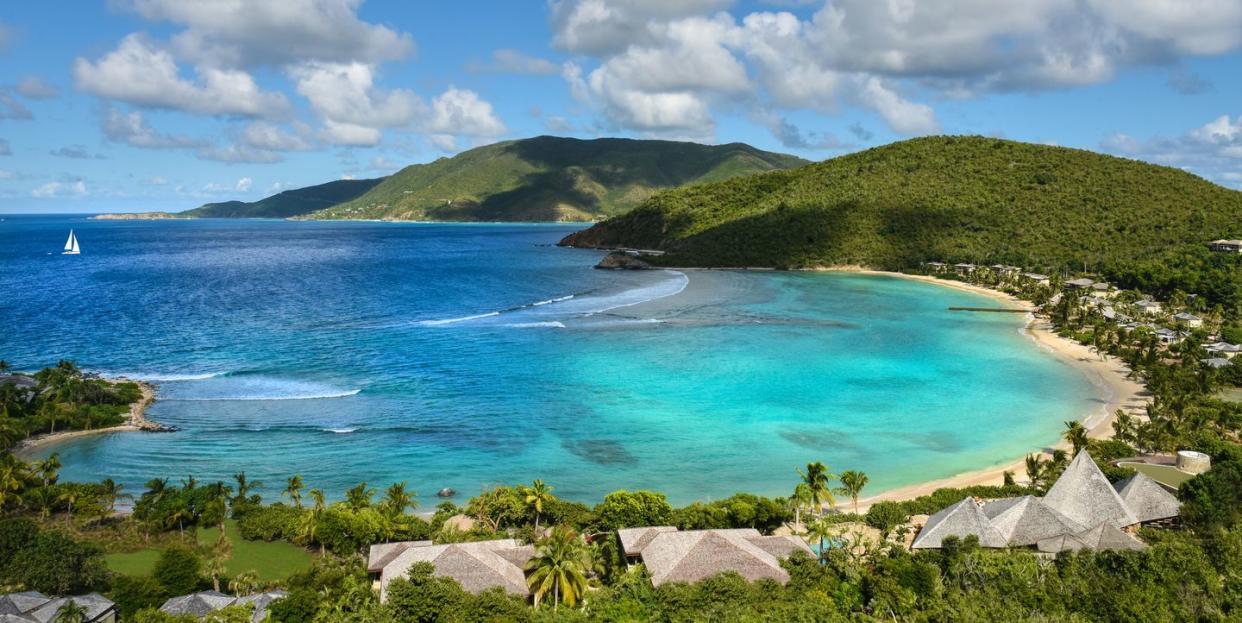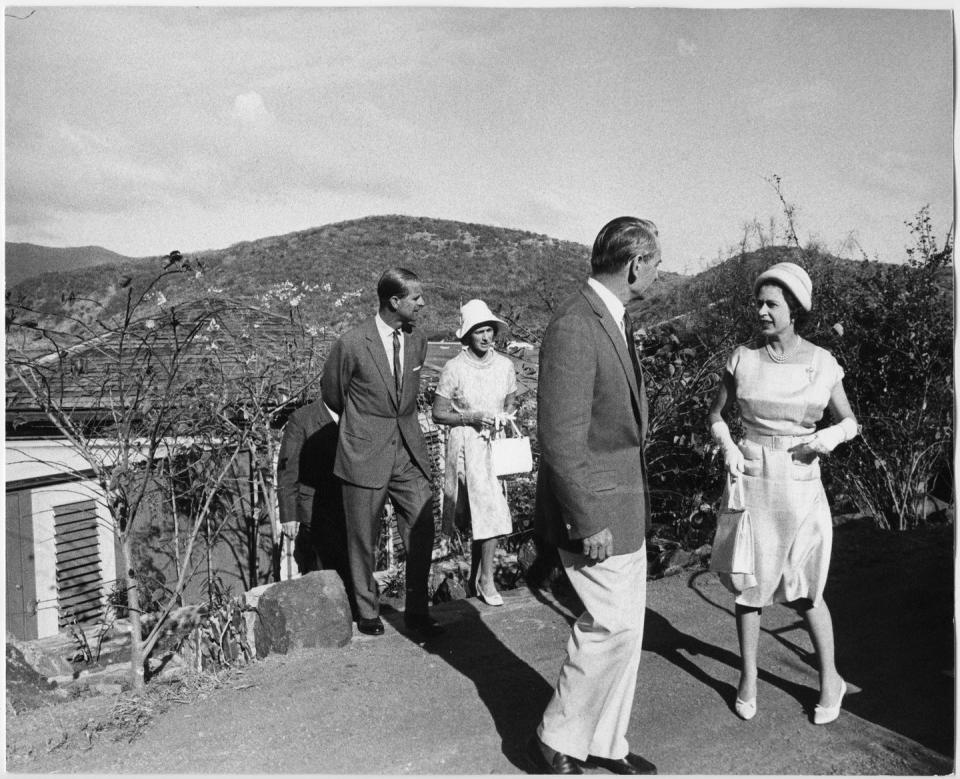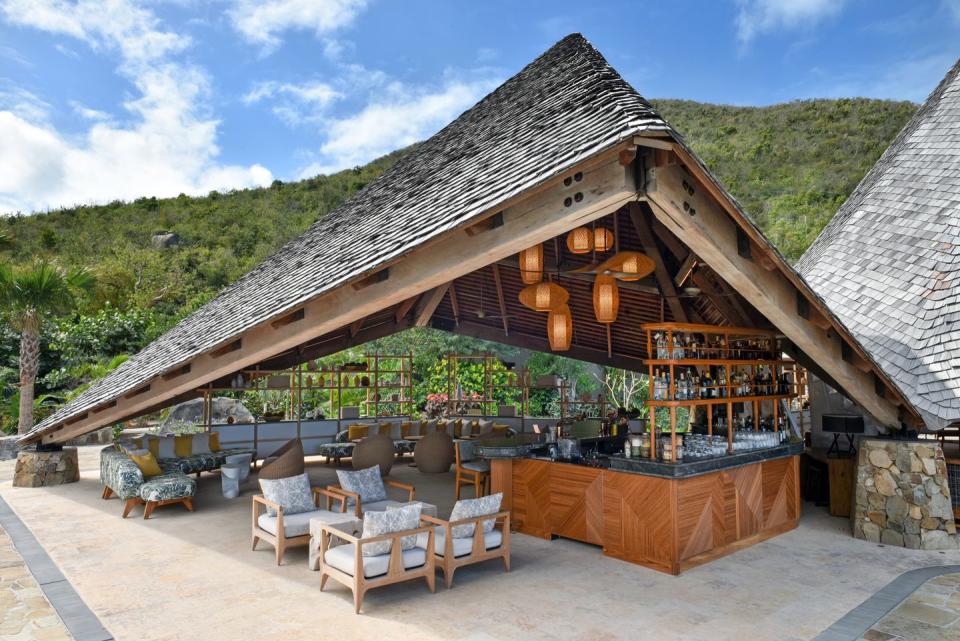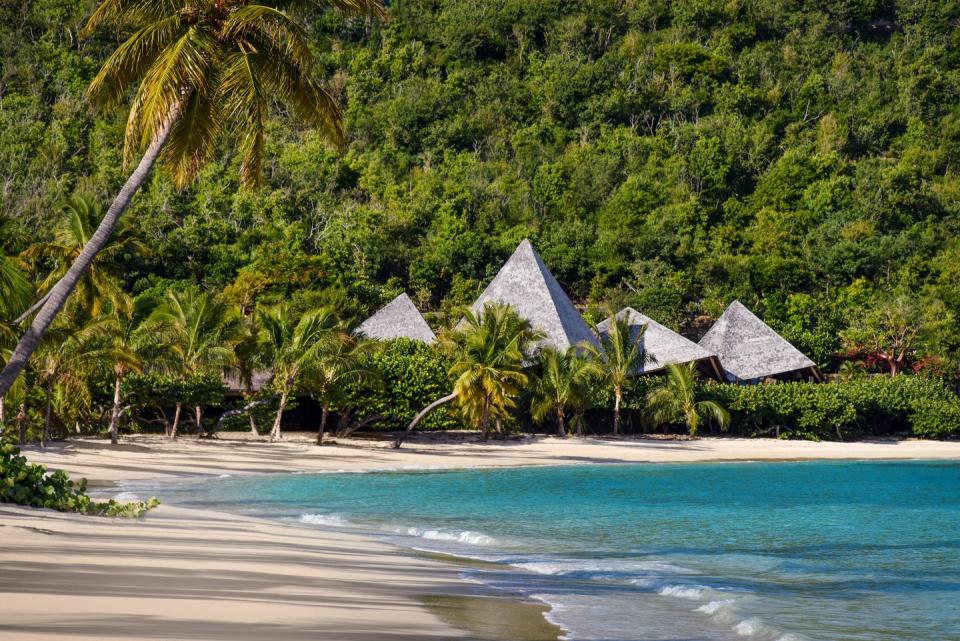A Rockefeller Resort in the Caribbean Is Restored to Its Rustic Glory

I traveled to Rosewood Little Dix Bay in mid February, soon after its renovation. On March 24, it temporarily suspended operations because of the coronavirus pandemic. The resort team is closely monitoring the situation, in coordination with the government of the British Virgin Islands, and will announce reopening plans when the time is right.
There have never been many hotels in the world that you could say were decades ahead of their time; cutting-edginess is not an imperative in the hospitality business. But as the catamaran that picked me up from Tortola, where commercial flights to the British Virgin Islands land, approached Virgin Gorda’s Little Dix Bay and its eponymous resort (it’s quite the mood setter: a half-mile crescent of palm-fringed white sand), I thought of its founder, Laurance Rockefeller.
“Keep the environment as undamaged as possible,” he directed architect Walther Prokosch after buying up 500 acres of Virgin Gorda’s coast and hills in 1959. “Keep things simple and informal… Utilize natural resources and…benefit the local economy.”
It wasn’t just high-minded principles that moved Rockefeller, it was also his belief that untrammeled nature was the ultimate luxury for harried humans. (He wouldn’t even allow the lawns to be “fine-mowed.”) His well-heeled guests, he felt, would find true repose and rejuvenation not at a conventional resort but in something extraordinary, which he imagined as a “sophisticated fishing village” with a central, welcoming “long house.”
And so they did—even Queen Elizabeth, who visited in 1966, two years after Little Dix opened.

Its renovation, which was just completed by its current owners, Rosewood Hotels, after a four-year closure during which the place was nearly wiped out by Hurricane Irma, pays homage to and reinvigorates Rockefeller’s ideas.
The central open-sided dining pavilion—four soaring conical roofs designed, in Prokosch’s words, “to evoke something storm-tossed, irregular, tropical…[with] the look of tamed wildness”—survived the decades but for a few roof tiles, which have been replaced.
Everyone still congregates there among the Midcentury Modern–tinged rustic furnishings, and the new rum bar is excellent, as are the three restaurants, which serve largely farm-to-table food from an abundant kitchen garden (tours welcome).

The guest quarters, built of wood and the original local stone, occupy the same footprints as before and are still irregularly shaped and sited, as if they sprang up organically—rectangular and hexagonal, tucked into vegetation or on stilts to better capture the sea views.
They come with large private terraces and patios (you can practically live outside, and there is 24/7 room service); each has its own footpath to the never-crowded beach, its own thatch-roofed palapa and chaise longues on the sand, and most have outdoor showers, some “big enough to throw a party in,” as one guest remarked.

The resort now has six tennis courts, a large fitness center, and a vertiginously situated spa. (Rockefeller might not have approved: He had a horror of all organized resort facilities, even croquet lawns.) But the hot outing remains the classic “beach drop”: by boat, with a picnic, to one of the nearby deserted strands of sand.

As for air conditioning, Rockefeller hated it. (So do I.) The rooms now have it, but this is the first resort where I have come back from dinner after turndown to find the AC off and the terrace doors open to the trade winds—exactly as I left them.
This story appears in the May 2020 issue of Town & Country. Subscribe now
You Might Also Like

